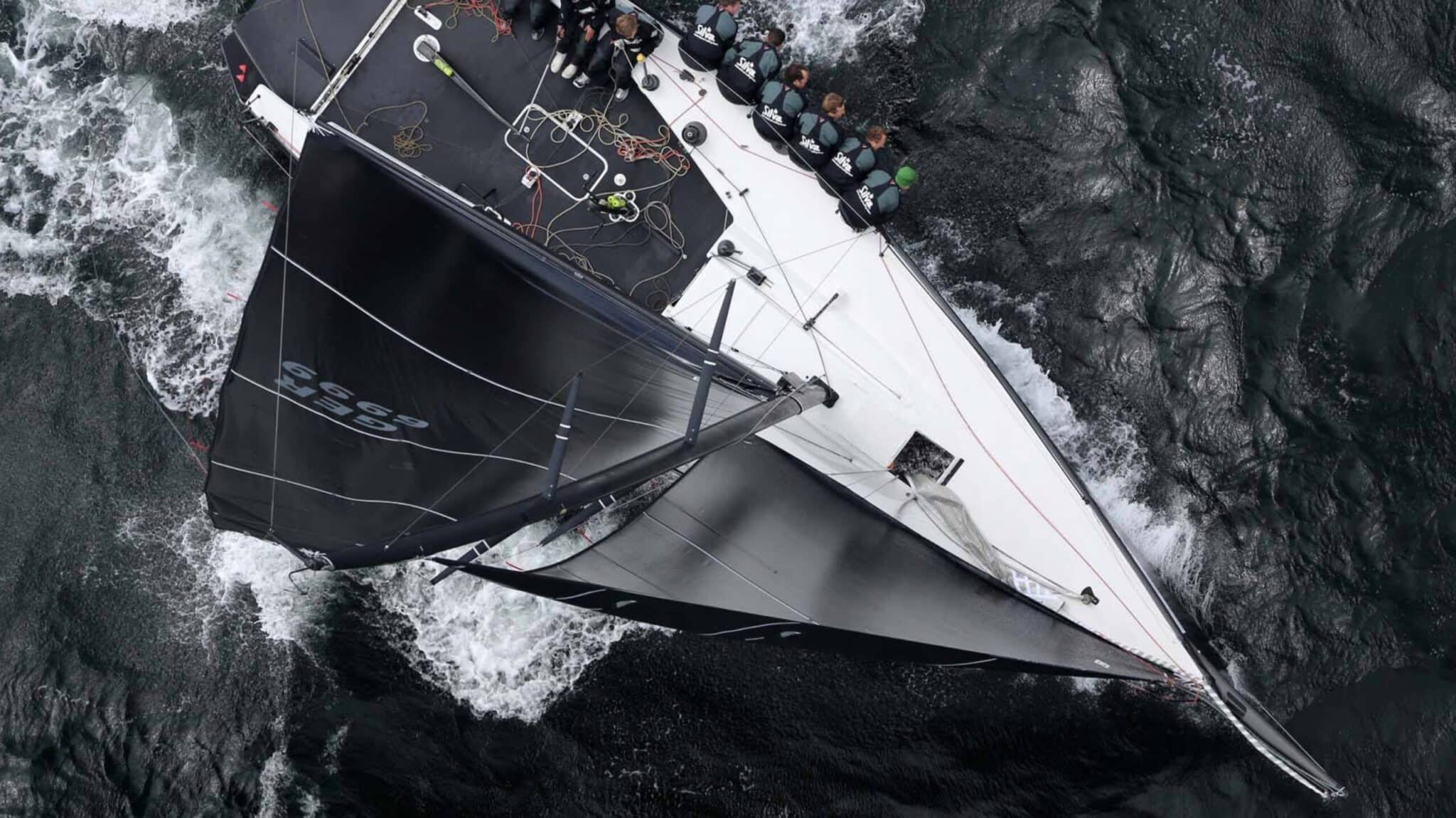
X-Drive Racing Mainsail
UK Sailmakers’ X-Drive sails are the preferred choice for sailors who are looking for the performance of continuous yarn sails yet also want sails that are durable and affordable. Because they deliver on all three points, X-Drive sails have proven to be the ideal choice for racers, club racers and performance cruisers.


Holds Its Shape
X-Drive sails are created using a two-part construction method. The first step starts with lightweight laminated sailcloth that’s cut into cross-cut panels with shaped seams. Once the broad-seamed panels are assembled, the sail will have the exact aerodynamic shape the sail designer created.
Then UK Sailmakers uses proprietary machines to lay down a grid of continuous yarns that span the sail. These yarns run continuously from corner to corner following the sail’s primary load paths. These yarns are high-strength and low -stretch and they serve the same purpose as the steel skeleton in a tall building – the yarns carry the highest loads in the sail while the paneled skin defines the aerodynamic shape.
And since the continuous, high-strength yarns cross over the seams between the cross-cut panels, seam creep and catastrophic sail failures are eliminated.
Depending on your specific needs and which X-Drive sail you select, these yarns can be carbon fiber, Endumax or S-Glass. A grid of carbon fiber yarns on a laminate with a black aramid scrim gives the sail an all-black appearance. For those who prefer sails that are all-white, X-Drive Silver sails look like traditional, all-white sails.


Cost Effective
The cost of the sail is also controlled because the sail surface can be made out of a less expensive, lightweight laminated material, whose only job is to give the sail its 3-D shape. All the sail‘s strength comes from the dense grid of continuous high-strength fibers that are bonded to the sail’s surface.

X-Drive Carbon
Description:
Load path reinforced sail construction for performance cruising and club racing.
Construction:
Extra lightweight cross-cut laminate panels reinforced with continuous corner-to-corner carbon fiber yarns.
Material:
Carbon fiber load path yarns applied 11 at a time along the sail’s computer-predicted load paths. Carbon fiber is the strongest and least stretchy yarn used in sailmaking.
Shape Stability:
★★★★
Durability:
★★★★
Shape after 500 hours:
Circa 80%
Price:
$$$$

X-Drive Silver
Description:
Load path reinforced sail construction for performance cruising and club racing. Allows for an all-white appearance.
Construction:
Extra lightweight cross-cut laminate panels reinforced with continuous corner-to-corner S-Glass yarns.
Material:
S-Glass fiber load path yarns applied 11 at a time along the sail’s computer-predicted load paths. Glass fiber yarns have more stretch than carbon but are less expensive.
Shape Stability:
★★★
Durability:
★★★★
Shape after 500 hours:
Circa 70%
Price:
$$$$

